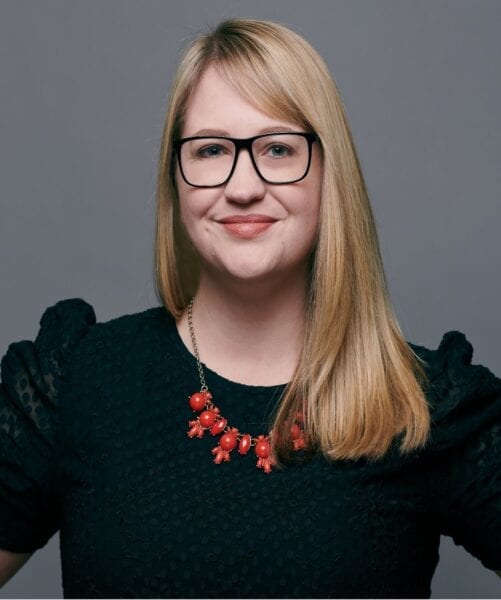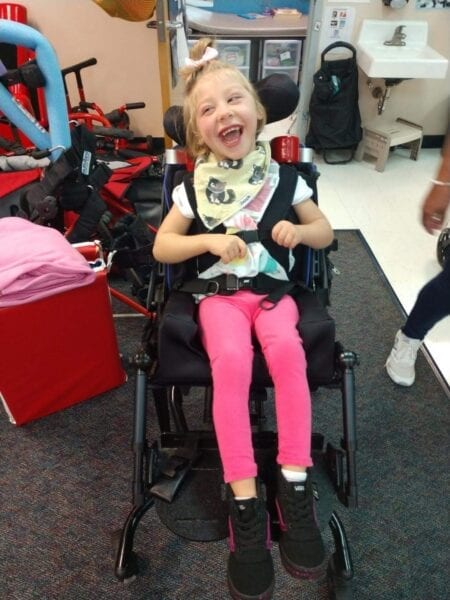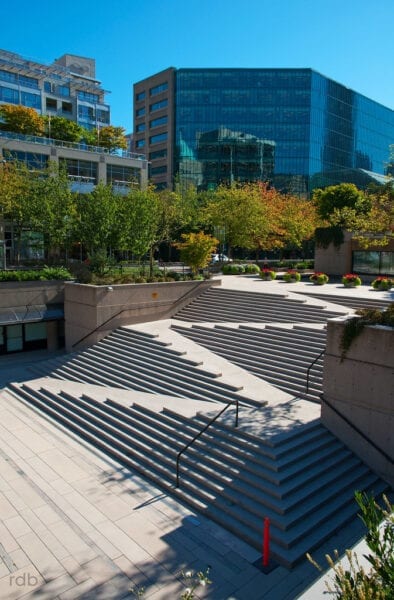 “The best part about my job is seeing how a project you’ve worked on impacts people’s lives,” says Carly Okerfelt.
“The best part about my job is seeing how a project you’ve worked on impacts people’s lives,” says Carly Okerfelt.
Carly’s eyes light up when she talks about technology. A worldwide category leader for Lenovo’s commercial product portfolio, Carly works on the front lines of cutting-edge computing, building out new and innovative product categories that aim to transform the landscape of personal computing. Just earlier this year Carly kicked off 2020 by introducing media, influencers, and tech enthusiasts around the world to Lenovo’s X1 Fold, the world’s first foldable PC, at CES in Las Vegas.
From computers and tablets to smart Internet of Things, working behind the scenes of transformative technology has long been Carly’s focus in her career. Before her work in foldable tech, she spent several years working alongside colleagues to adapt Lenovo’s AR/VR solutions to fit the needs of classrooms for immersive educational programs and partnering with The Starlight Foundation to improve the way healthcare providers manage pain for young patients.
“Over my career there have been a few of those moments like, ‘wow, this is worth it’,” she says. “It’s amazing how much little things in technology can make a big difference in people’s lives.”
The same ‘worth it’ moments that inspire her passion for her work also drives her engagement in Lenovo’s employee community. Last month, Carly helped establish the company’s newest employee resource group ABLE; which stands for ‘A Better Lenovo For Everyone’. Within ABLE, Carly serves as the Employee Engagement Chair, offering support to Lenovo employees with disabilities, or colleagues who support family or friends with disabilities at home or are passionate about being allies for the disability community. That support comes in the form of guidance for resources, navigating benefits, and sometimes simply just providing a safe place to vent.
“It’s about letting them know they’re not alone,” she explains. “You’re not alone in this and there are colleagues who are in your situation or facing similar situations who are here to help.”
You’re not alone in this and there are colleagues who are in your situation or facing similar situations who are here to help
When Carly speaks about the power of support systems, she starts to get a little emotional. It’s a topic that hits close to home for her.
A mother of three, Carly’s 5-year-old daughter Claire suffered from Hypoxic Ischemic Encephalopathy, also known as HIE, which occurred in the hours just before birth. HIE happens in 2-3 out of every 1,000 live births. At four month old, Claire was diagnosed with severe quad cerebral palsy, a condition that greatly limits her ability to control certain movements and functions, including speech. Communities of support, Carly says, have been groundbreaking for her.
 “Over the last 5 years it’s definitely been a journey of acceptance,” she shares. “This is our life – it’s not what we had dreamed of or planned for, but everyone’s ‘difficult’ is difficult to them. The communities of other moms and parents who have kids with HIE or Cerebral Palsy are an extended family of support. We celebrate milestones and mourn losses with one another. It’s hard to be alone in this, and if I can help even one family, that makes it all worth it.”
“Over the last 5 years it’s definitely been a journey of acceptance,” she shares. “This is our life – it’s not what we had dreamed of or planned for, but everyone’s ‘difficult’ is difficult to them. The communities of other moms and parents who have kids with HIE or Cerebral Palsy are an extended family of support. We celebrate milestones and mourn losses with one another. It’s hard to be alone in this, and if I can help even one family, that makes it all worth it.”
One of the highlights of having a community of support is the sharing of best practices and tech solutions. For the more than one billion disabled people around the world, technology enables opportunities to tackle daily challenges presented by their disability.
For people like Carly, it means giving a voice to her daughter.
With the aid of a tablet and a Bluetooth-connected headset switch, Claire is learning to manually activate her favorite music, from the Elmo cartoon. She’s learning that she can control the music to play or stop, which may seem like a small gesture now, but represents the beginning of a much larger journey of learning to communicate with the world around her. Gradually, the switch will evolve to allow her to initiate responses like “Yes / No” or “More / Less”, and, eventually, to connect with an application for word scanning to enable full sentences.
“It takes a lot of practice, but the goal is that she will be able to communicate with us,” Carly explains. “That’s amazing because, presently, she can’t do anything herself and she can’t communicate. It’s heartbreaking when she’s upset, to think of everything that could be wrong – Is something pinching her? Does she have an itch? Is she just being a moody 5-year-old? Is she uncomfortable from sitting too long? Those simple things that most of us don’t think about, she can’t fix herself or communicate to ask for help.”
While the technological era has ushered in innovations for people like Carly’s daughter, the assistive tech revolution hasn’t come without challenges. Among other issues, much of adaptive technology is fairly expensive compared to its non-adaptive counterparts, and for under-resourced communities there’s a growing digital divide of the ‘haves’ and the ‘have-nots’ where the benefits of tech fall short of reaching low-income, traditionally maligned communities. Another caveat, Carly says, is that adaptive features are still an after-thought in product development.
 “A lot of adaptive features are built after the fact,” Carly shares. “For example, most of the time you build a staircase, and then you build a ramp afterwards to meet ADA regulations. There are a few examples around the world of designers that have built these innovative staircases with ramps embedded within them. As with anything, there are some downsides and it’s not a perfect example, but it’s still a way to think differently and truly design for all from the ground up.”
“A lot of adaptive features are built after the fact,” Carly shares. “For example, most of the time you build a staircase, and then you build a ramp afterwards to meet ADA regulations. There are a few examples around the world of designers that have built these innovative staircases with ramps embedded within them. As with anything, there are some downsides and it’s not a perfect example, but it’s still a way to think differently and truly design for all from the ground up.”
To help advocate for that diverse perspective in the product development process, Carly and her fellow ABLE leaders are partnering internally with Lenovo’s Product Diversity Office, an up-and-coming internal organization tasked with ensuring a dedicated focus on inclusive product design.
Keeping the diverse needs of users in mind throughout product development is achieved by maintaining a diverse team, Carly says.
“You have to involve people who have the right insights or education – whether because they have first-hand experience with a disability or a perspective, or that you find external resources that can bring that insight so those considerations are embedded from the beginning,” she says. “We need to think beyond ‘Did we check the box to satisfy accessibility requirements?’, but ‘Did we test this with someone to understand user experience for someone who is hearing impaired? Or has other disabilities?”
